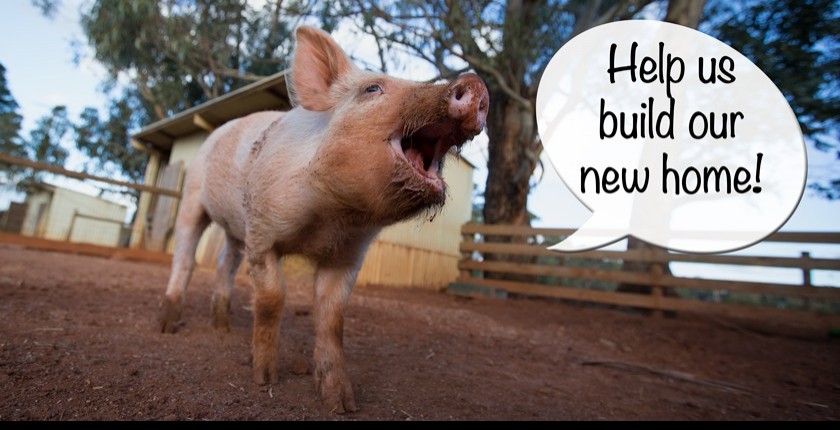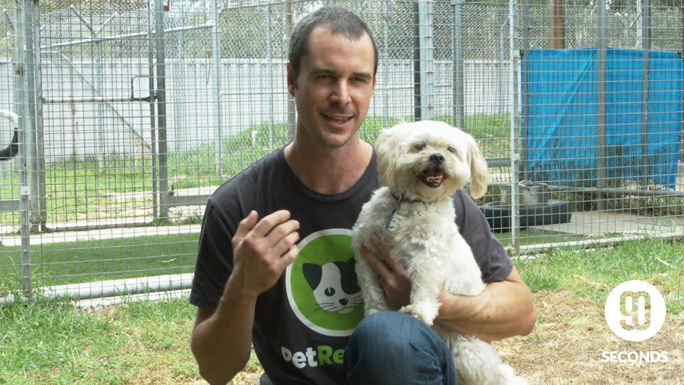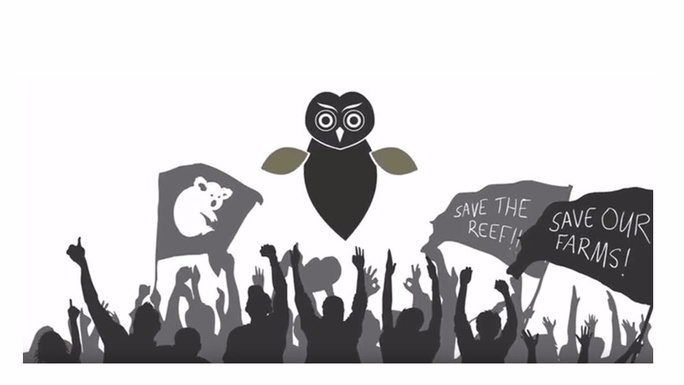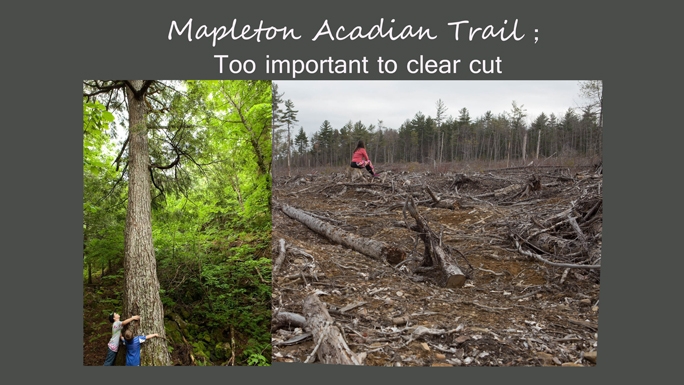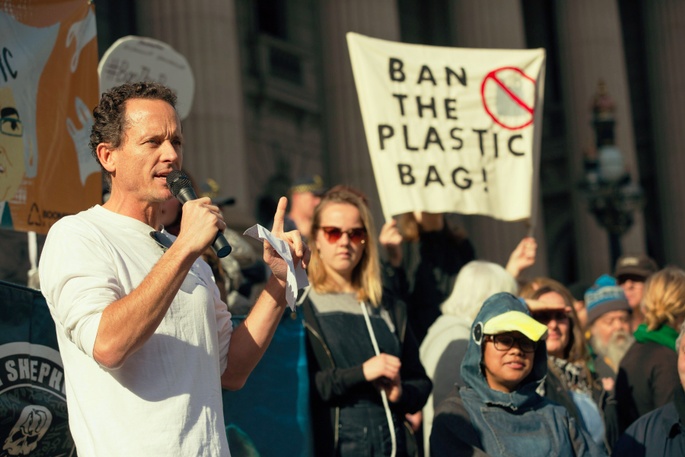At Chuffed.org, we want to see our awesome environmental protection and conservation campaigners – people like you – run the most successful crowdfunding campaigns that they can.
So we’ve put together this guide that will step you through creating a strong campaign page to strengthen the foundations of your campaign.
The Crowdfunding Campaign page
A crowdfunding campaign page is the page on Chuffed.org where you’ll direct supporters, donors, friends and family. It will include the details of who you are, what you are trying to achieve and how you plan to do so, and, it is the place supporters actually donate to your campaign.
Choosing the right options and including information in an easily digestible way is important and can be the difference between a good campaign and a great one.
A campaign page looks a bit like this example from Environment Tasmania. The title is at the top, followed by the name of your organisation. To the left of the screen under the title is the campaign banner or video; on the right is the campaign target and counter. Under this is a box containing your campaign’s ‘pitch’ and buttons supporters use to initiate their donations.
Beneath these is the main body text outlining your campaign’s story – the campaign description. The tabs can be switched to show comments from supporters, and names of supporters. On the right next to the main story are where perks are listed should you choose to have them.

Click here to see Environment Tasmania’s full campaign page.
Setting up your campaign page
All the components of a crowdfunding campaign page are stepped out below alongside examples from successful environmental protection campaigns we’ve hosted on Chuffed.org.
We’ve also created this handy Google Doc template that you can use to collaborate with your team. It contains some more examples from great campaigns.
To start setting up your crowdfunding campaign page, head to chuffed.org/start.
1. Campaign title
This is what your campaign is called. The title shows at the top of your campaign page and is shared with potential supporters when you share the campaign out via Facebook and Twitter – so the title (along with the banner image – more about that below) is the first thing people will see.
Good titles are less than 5 words long and are like the title of a book: memorable or catchy. You might include alliteration, a question, a play on words or unique spelling.
Some real examples from successful campaigns:
- Where have all the Grasswrens gone?
- Build Farmwalls with us!
- Project Piggy Paradise
- Save Sawtell Cinema
- I came by boat
- Two Good Lunch
2. Target
All campaigns on Chuffed.org need to set a campaign funding target. You’ll receive your funds even if you don’t hit your target, but it’s important to set your target at an achievable level to build credibility with your supporters.

You should set your target based on three factors:
- Cost: What does it cost to deliver your project?
- Audience size: How many people do you have already in your database or email list?
- Available time: How much time do you have to prepare in the 4 weeks prior to the campaign and promote during your campaign?
As a rough rule of thumb, we find that the following is a reasonable way to set your target:

Email contacts are the most valuable, followed by Facebook friends and then Twitter or LinkedIn contacts.
3. Timeframe
On Chuffed.org, you can choose to either run your campaign for a fixed length of time (90 days or less) or ongoing with no end date in what we call Infinity Mode.
If it’s your first campaign, we generally find that you’ll raise the most when you run a 30-40 day campaign. The reason for this is that the time pressure forces your team to act, which drives momentum, which brings more people to your campaign. Campaigns that stretch on for a long period of time struggle to gain interest because supporters get distracted by other things in their lives.
4. Writing up your campaign
This is where you tell your supporters about your project: why your cause is important and what you are doing to make a difference.

Pitch
The pitch is short blurb to describe what you’re doing in 200 characters. It sits in a box just under you campaign target on the campaign page.
It is what potential supporters are likely to read first and helps them understand quickly what your project is about. Remember: they’re busy, and they’ll be skim reading, so the pitch is your chance to grab their attention and tell them why they should read your full campaign description. Be as succinct, specific and engaging as you can.
Here are some examples of good pitches used by real environmental protection campaigns on Chuffed.org:
Help us to share the Climate Choir message! Over 600 singers from community choirs across the country will join to urge action on climate change in the lead up to the UN Climate Conference in Bonn.
Every day the small team at Wildlife Queensland puts its heart and soul into correcting biodiversity loss in Queensland. YOU CAN give us the tools to keep up the good work for our wildlife in 2018!!!
We’re going out on a limb here – literally! Help us engineer an epic STEAM education opportunity for kids by using plastic waste to 3D print ROBOTIC PROSTHETICS for Australians in need. Let’s move!
And some not so great pitches:
We are a volunteer driven not-for-profit organisation that aims to empower communities across the region to address our climate challenges together. Help us support in this work.
An elephant is poached every 15 minutes for their ivory leaving behind many orphans. Help support us to save them and re-integrate them into the wild.
The idea is to start a recycling workshop and involve local and international artists to create art by reducing plastic waste.
Campaign description
This is the larger block of text on your campaign page and it’s where you can go into detail about what you’re doing. The best campaigns use about 300-500 words, combined with pictures, to tell a story about the change they want to make and how they plan to do it. You can even embed images or videos that you might have (in addition to the main campaign banner or video – described below).
As your campaign progresses, you can keep editing your campaign description. It’s a great place to put in progress updates- like Edgar’s Mission did in this award winning campaign – so that supporters who are checking your page regularly have fresh content to enjoy.
Below is a simple structure you can use for your campaign description. The example we’ve used is a summarised version of the excellent Foundation for National Parks and Wildlife campaign to save a colony of Little Penguins. We recommend you read the full campaign description.
EXAMPLE CAMPAIGN DESCRIPTION STRUCTURE
Section: Background
In this section:
- Introduce your vision for change and/or the story of who you are.
- Tell supporters briefly about the issue you’re addressing and why you want to do something about it.
- Use first person stories over facts and numbers to paint a picture.
Example
The penguin colony: Amongst the hustle and bustle of Australia’s biggest city, a group of charming and unusual locals have set up home in the popular suburb of Manly.The Manly colony of Little Penguins in Sydney Harbour is the only mainland breeding colony left in New South Wales. This special and unique colony was listed as an endangered population in the 1990s.
But there’s a problem… During June, a fox discovered this colony and devastated the population of Little Penguins at Manly. In just over two weeks, 27 helpless Little Penguins were killed by the fox.
Section: What we’re doing
This is where you should:
- Describe your project in practical detail. If you’re building something, show drawings or images of what it’s going to look like.
Example
In response to these gruesome discoveries, a special team of field officers, National Parks and Wildlife Service rangers, experts and volunteers are keeping watch on the nesting penguins day and night, to protect them from further attacks. At the same time an operation to trap the cunning creature continues.
Foxes are a huge threat to our native fauna and it is highly likely that other foxes in the future will attempt a similar attack. This is why we need your assistance, to help the volunteers and NPWS monitor and protect Manly’s Little Penguins from any future attacks and to help rebuild their endangered colony.
Section: What we’ll do with the funds
In this part you should:
- Break down your target and talk about what exactly the money will be spent on.
Example
In order to outfox the fox, more specialised equipment is needed as well as additional nest boxes. Here are some of the items FNPW are fundraising for:
- $10,000 for 20 motion sensing cameras to monitor the area
- $5,000 for a thermal camera that can detect the heat given off by penguins and predators
- $450 for 5 fox lights that are triggered by movement and give off bright, flashing lights to scare away foxes
- $1,000 for 10 nesting boxes to help the penguins rebuild their population
Section: Who we are
People give to people. They want to supporter a person, not a faceless project. So:
- Add a bio of yourself and your team.
- Add quotes from well known people to build credibility.
Example
The Foundation for National Parks & Wildlife has a long history of supporting the endangered colony of penguins in Manly. Since 1999 the Foundation has been helping fund equipment for volunteer wardens, nest boxes, signage to warn people about the presence of these vulnerable birds, and much more.
FNPW working in partnership with the local NPWS rangers, Taronga Zoo, Manly Council, Manly Environment Centre and the Office of Environment & Heritage has helped keep the Little Penguins in Manly safe up until now.
Additional sections
You may also want to include sections in this main body text about:
- Perks – Describe the perks that donors get back for donations at different donation levels. You can insert pictures that show them.
- Media – Tell supporters about any media articles you get about your campaign. You can use the logos of the media outlets to build credibility.
Another great example comes from Farmwall, who raised over their $30,000 target to build aquaponic farming systems in Melbourne restaurants that will start to address the environmental impact of the way cities eat by reducing the distance between where food is grown and eaten. See their campaign page here. They take a different approach to the structure laid out above – presenting first their vision for the future, followed by how they intend to make it happen.

5. Banner image
The banner image is the main visual element of your campaign. It’s the first thing potential supporters see and it gets shared on Facebook and Twitter alongside the campaign’s title.
This one comes from 350.org Australia’s campaign to raise funds to oppose the Adani coal mine. View their campaign here.

You want your image to:
- Make your supporters feel inspired, entertained or curious, not guilty or shocked.
- Be formatted to 684 x 385 pixels for optimal compatibility on our site.
- Be in a normal image format – JPG, PNG or BMP.
For clarity, Chuffed.org is a guilt-free site. We reject campaigns that use guilt-imagery like dehumanizing photos of starving children to get donations, or graphic, disturbing images of animals.
6. Video
The best crowdfunding campaigns include a campaign video. This is a specific 2-5 minute video created for the campaign. Don’t use a generic promotion video designed for something else.
Campaign videos don’t need to be expensive or have high production value. It’s far more important that the video tells a compelling story than looks pretty.
Here are some tips:
- People love seeing faces. Make sure the video includes relevant people talking at the camera at some point.
- Keep it short. People get bored easily, so unless you’ve got an incredible storyline, don’t have a video longer than 3 minutes.
- Be ridiculously enthusiastic. Not only do viewers feed off your enthusiasm, video has a weird way of taking normal speech and making it look like you’re bored senseless. If you act ridiculously enthusiastic, it looks completely normal on video.
- Use narrative storytelling over facts. People share stories, not facts. An easy way of doing this is to follow one person’s story – which could be your own or a beneficiary.
- Later model phone cameras and DSLR cameras take excellent quality videos. If you can pair that with a free movie editing package like iMovie on Mac, you can create fairly professional looking video for free.
- If you do end up paying a production company for your video, budget at least $2,500/£1,500 for a 2 minute video.
All videos on Chuffed.org need to be uploaded to Youtube or Vimeo first. You then enter the URL from either service into the relevant field in the campaign editor.
Examples: For some inspiration, take a look at these two campaign videos made by the Conservation Council of Western Australia (Video 1; Video 2) and this one from Environment Tasmania.
7. Creating perks
Perks are things that you offer supporters who donate above a specific amount.
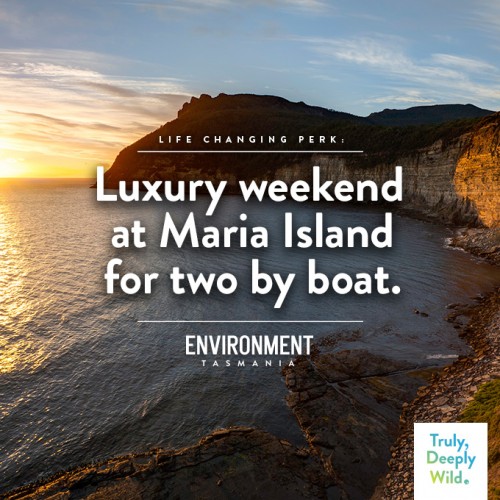
We get asked a lot about perks, especially about how important they are for crowdfunding success? Do I really need to offer perks? Won’t it stop people being philanthropic?
Our answer? Perks help. A LOT.
The reason for this is that perks give people a way of participating in your campaign. They tap into selfish motivations as well as benevolent motivations. And they let you access your supporters’ spending purse, not just their philanthropic purse — you can guess which of these is bigger.
So what perks should you offer?
Perks tend to fall into three categories:
- Pre-release products or services: ‘Selling’ products and services via crowdfunding is probably the most common type of perk. Whether it’s a weekend away, tickets to your event, memberships, CDs, bee-hives or even crepes, forward selling products and services is a great way to get people involved in your project.
- Unique experiences: Most environmental protection organisations don’t realise it, but they are nearly always an amazing repository of wonderfully special, unique experiences. It could be a personalised guided tour, workshops on a farm, tickets to an opening party, or even a chance to swim with whales.
- Special recognition: A non-profit classic. Getting their name on or sponsoring a part of a project is still popular among many crowds. The key here is being creative on what can be sponsored. Edgar’s Mission had barns, rocks, rakes, posts, shelters and even a mountain. Making a documentary film? Offer sneak previews of the script or a donor’s name in the credits.

So, how do you come up with perks?
This might sound obvious, but the easiest way to come up with perks is to co-design them with potential donors. Edgar’s Mission ran a workshop with some of its key volunteers prior to its campaign to come up with their perks. Spacecubed – a co-working space in Perth – did the same with their members. It’s best to have a hypothesis on your perks as a starting point, as well as the levels you need perks at (normally $25, $50, $100, $250, $1000, $2500, $5000).
Some other considerations:
- Have perks that are directly connected to your campaign These let people participate in your campaign or project and are far better than unconnected perks, e.g. Amazon gift cards.
- Have an early bird offer on your perks This is a great way to build momentum. Spacecubed released a very limited number of highly discounted memberships in the first 24 hours of their campaign.
- Some perks (drugs, anything illegal, raffles) are not allowed Make sure you check our terms to stay on the right side of the rules.
8. Payment options
When you’re setting up your campaign, you’ll have to choose what payment options you give to your donors. Your two options are:
- Credit/debit cards: Donors can use any domestic or international Visa, Mastercard or American Express card to pay directly on our site (recommended). To use this payment option, you’ll need to create an account with Stripe for the funds to be transferred to. If you’re running an Australian campaign then you’ll just need to give us your bank details so we can transfer credit/debit card donations to you there.
- PayPal: Donors can pay using their PayPal accounts.
Tip: Donors find the credit/debit card payment system much easier to use than PayPal. The donation process happens entirely on the Chuffed.org site – they just enter their card details and it works. PayPal unfortunately is confusing for a lot of donors and regularly rejects valid cards and accounts. They may also unexpectedly restrict your PayPal account if your campaign is very successful. We recommend only using PayPal as a secondary option with the credit/debit card system.
The way that you receive the funds from the two systems depends on which country you choose for your campaign – this should be a country where you have a bank account:

(1) During the campaign creation process, you will need to create an account with our payment processing provider, Stripe.com. This is a very simple, one form process, which will take less than 5 minutes.
(2) To accept PayPal payments, you will need to create a Premier or Business PayPal account at www.paypal.com, prior to launching your campaign. The campaign will need to be confirmed and connected to a bank account. This can take up to 3 months.
9. Additional options
On Chuffed.org, there are a number of optional customisations for your campaign page, including:
- Collecting addresses from your donors: we’ll add an address collection form on the payment page if you select this. We only recommend collecting addresses when you absolutely need to, like if you need to post out a perk, as people feel weird giving about you their address.
- Custom Thanks Message: you can customize the message that donors see immediately following their donation.
- Impact Levels: instead of giving out perks, you can choose to show donors what impact different levels of donations make – think the classic £50 buys a goat for a farmer in Africa. It’s a bit old-school, but still works.
- Custom URL Link: your can change the default URL link assigned to your campaign.
- Custom default donation amounts: you can customize the default donation amounts that are shown on the donation box on your campaign page.
- Offline donations: when supporters send you donations in cash or via cheque/check, you can add these to your campaign total by using our ‘offline donations’ function. You should limit the amount of offline donations to 50% of your total donations.
- Tax-deductible receipting: Available for campaigns in Australia, Canada and the US where your organisation is eligible (e.g. Deductible Gift Recipient for Australian organisations). Every donor will be sent a receipt to meet requirements for them to claim a tax deduction.
- Gift Aid (UK only): Chuffed.org can collect Gift Aid Declarations on behalf of recognized charities or registered community amateur sports clubs (CASC) which you can then submit to HMRC to claim your Gift Aid
Submitting for approval
All campaigns on Chuffed.org have to be submitted to us for approval before they can go live. We check that they satisfy our eligibility requirements and that they have a decent chance of reaching their target.
The approval process usually takes less than 24 hours. You will get an email from us that either approves your campaign for launch, asks you to modify your campaign and resubmit, or rejects your campaign outright.
About 60% of campaigns are approved on first submission. Once you’ve had one successfully funded campaign on Chuffed.org, we auto-approve all future campaigns.
For more inspiring environmental protection campaigns check out…
- The Top 5 Environment Crowdfunding Campaigns
- Search ‘Environment’ on the Chuffed Discover page or browse through the subcategories on our movements page
For more information and tips on how to crowdfunding…
If you’d like to read more about how to crowdfund, view our full guide here.

Or if you’re ready to draft your campaign, just head here.






